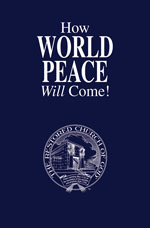Queen Elizabeth II is the first child of King George VI and his wife, Elizabeth. She was born to them on April 21, 1926 at 17 Bruton Street in Mayfair, London, when they were the duke and duchess of York. They called her Elizabeth Alexandra Mary.
Queen Elizabeth was named after three previous queens: her mother, her paternal great-grandmother, Queen Alexandra, and her paternal grandmother, Queen Mary.
From the time of her birth, her parents determined to make their daughter appreciate her privileges and responsibilities as a royal. A lively child, the young girl’s sense of fun was evident in the kind of games she played with her grandfather. The Archbishop of Canterbury reportedly was confused and disconcerted when, upon arriving for an audience with George V, he found him crawling on all fours across the floor, pretending to be a horse, with the young Elizabeth riding him.
In her formative years, she spent time at the country homes of her paternal grandparents, King George V and Queen Mary, and her mother’s parents, the earl and countess of Strathmore.
The future Queen Elizabeth and her younger sister, Margaret, received almost all of their early education privately at home.
Since her father was second in line in succession to the throne of England, no one thought he would ever become king, much less his daughter Elizabeth become queen. When her grandfather King George V died in 1936, her uncle, Prince of Wales Edward VIII, became king. Shortly after acceding the throne, Edward abdicated to marry his sweetheart, thus paving the way for her father to become king—and his daughter Elizabeth, a hitherto unlikely candidate, to become heiress presumptive to the throne.
Education and Activities
The queen-in-training began studying constitutional history and law to prepare for her future role. She learned through various teachers: her father, Vice-Provost of Eton College Henry Marten, the Archbishop of Canterbury, and a few French and Belgian governesses, who taught her French. She also studied art and music, and loved to ride horses.
Princess Elizabeth was a consummate learner who excelled in whatever she applied herself. She joined the Girl Guides at age 11. A formidable swimmer, the 13-year-old won the Children’s Challenge Shield award at London’s Bath Club, and later joined the Sea Rangers, a sailing club.
The princess involved herself with various charities, becoming the president of both the National Society for the Prevention of Cruelty to Children and the Queen Elizabeth Hospital for Children in Hackney, East London.
During the Second World War, when King George went to visit British troops, the 18-year-old princess stood in for him and performed many of the king’s official domestic functions as head of state, receiving an address from the House of Commons. She also represented the British crown overseas at age 21 on her first official trip to South Africa.
In 1945, as the Second World War raged on, the princess joined the Auxiliary Territorial Services as Second Subaltern No. 230873—a rank equivalent to second lieutenant. By the end of the war, she had risen to the rank of junior commander in the Royal Navy.
Marriage
At Westminster Abbey on Nov. 20, 1947, the princess married Lieutenant Philip Mountbatten, a descendant of Queen Victoria and son of Prince Andrew of Greece.
The couple had their first child, Charles, on Nov. 14, 1948 and two years later, Princess Elizabeth gave birth to her only daughter, Anne. The princess later had two other children—Andrew and Edward. She has eight grandchildren.
For her, family life has been an important part of her monarchy.
Accession to the Throne
King George VI died on Feb. 6, 1952, paving the way for his daughter’s accession to the throne. She was crowned in Westminster Abbey on June 2, 1953, as “Her Royal Majesty Elizabeth the Second, by the Grace of God, of the United Kingdom of Great Britain and Northern Ireland and Her other Realms and Territories Queen, Head of the Commonwealth, Defender of the Faith.”
The coronation reflected the pomp and pageantry of British royalty. The occasion was well-attended by Britain’s elite, as well as several world leaders and their representatives.
Functioning as Queen
The newly crowned 26-year-old queen proved to be the epitome of a modern monarch. Willingly and gracefully, she bore the immense burden of public expectation.
Though an accomplished stateswoman, she began her reign at a difficult time, as the empire was beginning to disintegrate. Nevertheless, she toured most parts of the commonwealth, thereby ingraining herself and the monarchy into the hearts of the peoples of countries battling British colonialism. Queen Elizabeth is still the head of state of about 14 of her former colonies, including Canada and Australia.
Important Events in the Queen’s Life
The queen has traveled to almost every part of the globe in a way never done by any monarch before her. Below are important highlights of some notable events during her almost 58-year reign:
- July 1, 1969: Her son Charles becomes the Prince of Wales.
- June 13, 1981: A boy fires six shots at the queen during a ceremony. Thankfully, they are blanks.
- July 29, 1981: Prince Charles and Lady Diana Spencer marry in St. Paul’s Cathedral in one of the grandest wedding ceremonies in recent history.
- Spring, 1982: Prince Andrew, the Queen’s second son and a Royal Navy helicopter pilot, fights in the Falklands War.
- Summer, 1982: The Queen’s Household Cavalry and the Royal Greenjackets fall victim to IRA bomb blasts.
- 1990: The queen’s vast wealth becomes the subject of intense scrutiny and debate, particularly by news media and politicians.
- 1992, one of the worst years in the life of Queen Elizabeth II: The queen succumbs to the call for her estate to be taxed; Prince Andrew and his wife Sarah announce their marital separation; Windsor Castle gutted in fire; Prince Charles and Lady Diana formally separate.
- Aug. 31, 1997: Princess Diana dies in a tragic car accident in Paris.
- Nov. 6, 1999: Australia holds unsuccessful referendum to remove the queen as head of state.
- June 2, 2002: The queen’s 50th year on the throne of England.
- April 21, 2006: The queen turns 80.
- Nov. 20, 2007: The queen and duke’s 60th (diamond) wedding anniversary.
- 2007: The United Kingdom, Canada and Australia produce special gold coins to mark the first diamond wedding anniversary in the British monarchy’s history.
The Queen Today
Currently the world’s second-longest reigning monarch, Queen Elizabeth II has sat on the British throne longer than any other monarch in English history.
As the queen gracefully ages, she reportedly spends more time interacting with her subjects, though she still performs official assignments as head of state.
Queen Elizabeth is a monarch who will not be forgotten as she has made an indelible mark on British history.
















